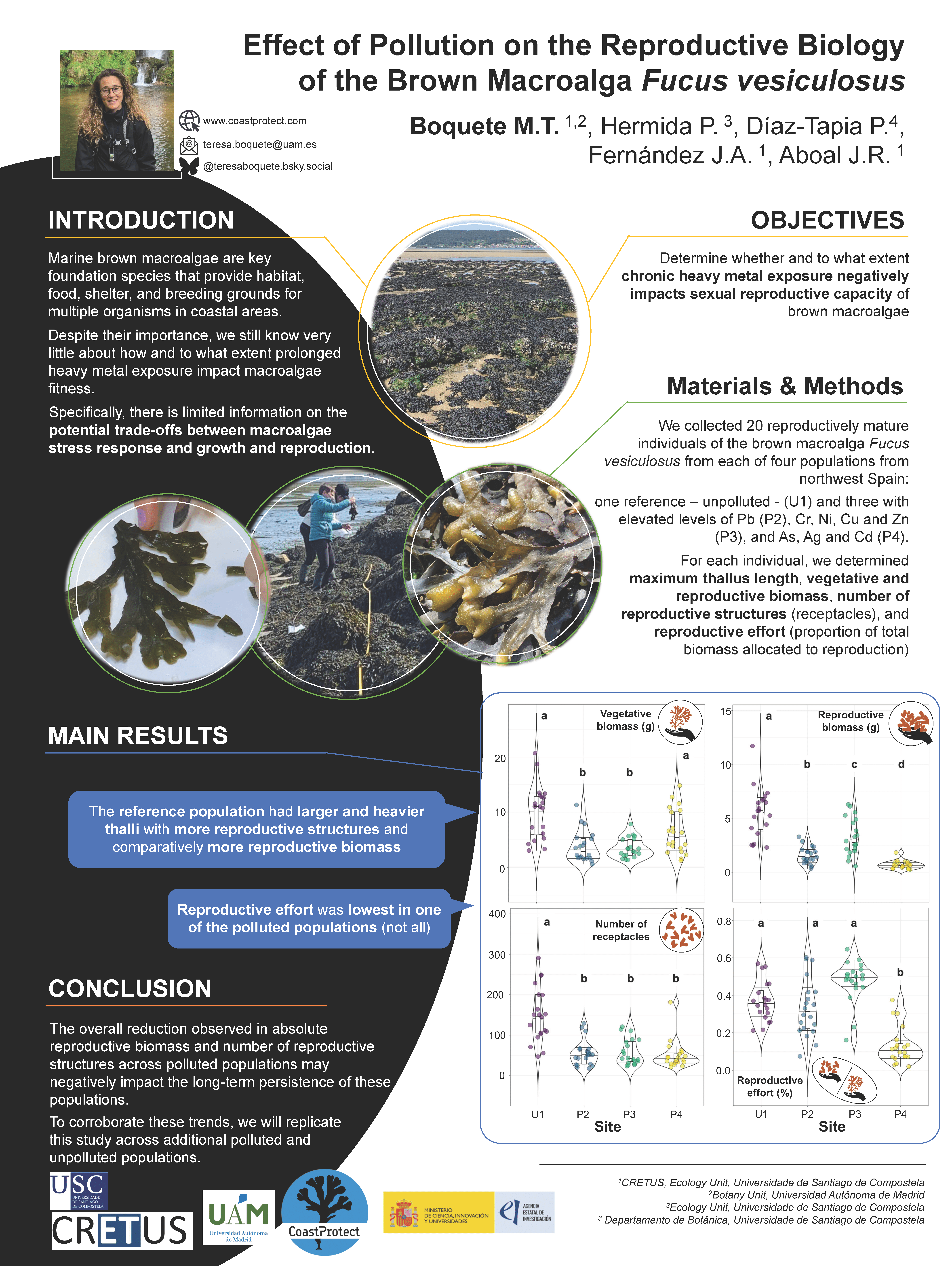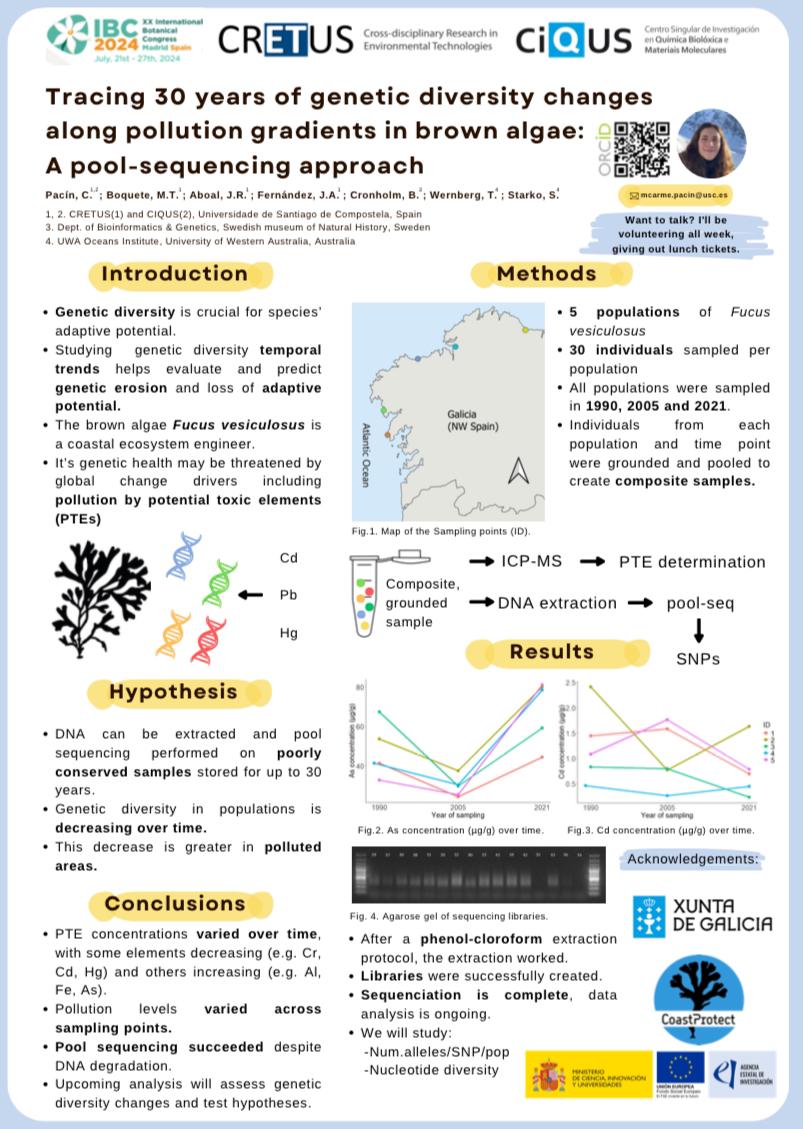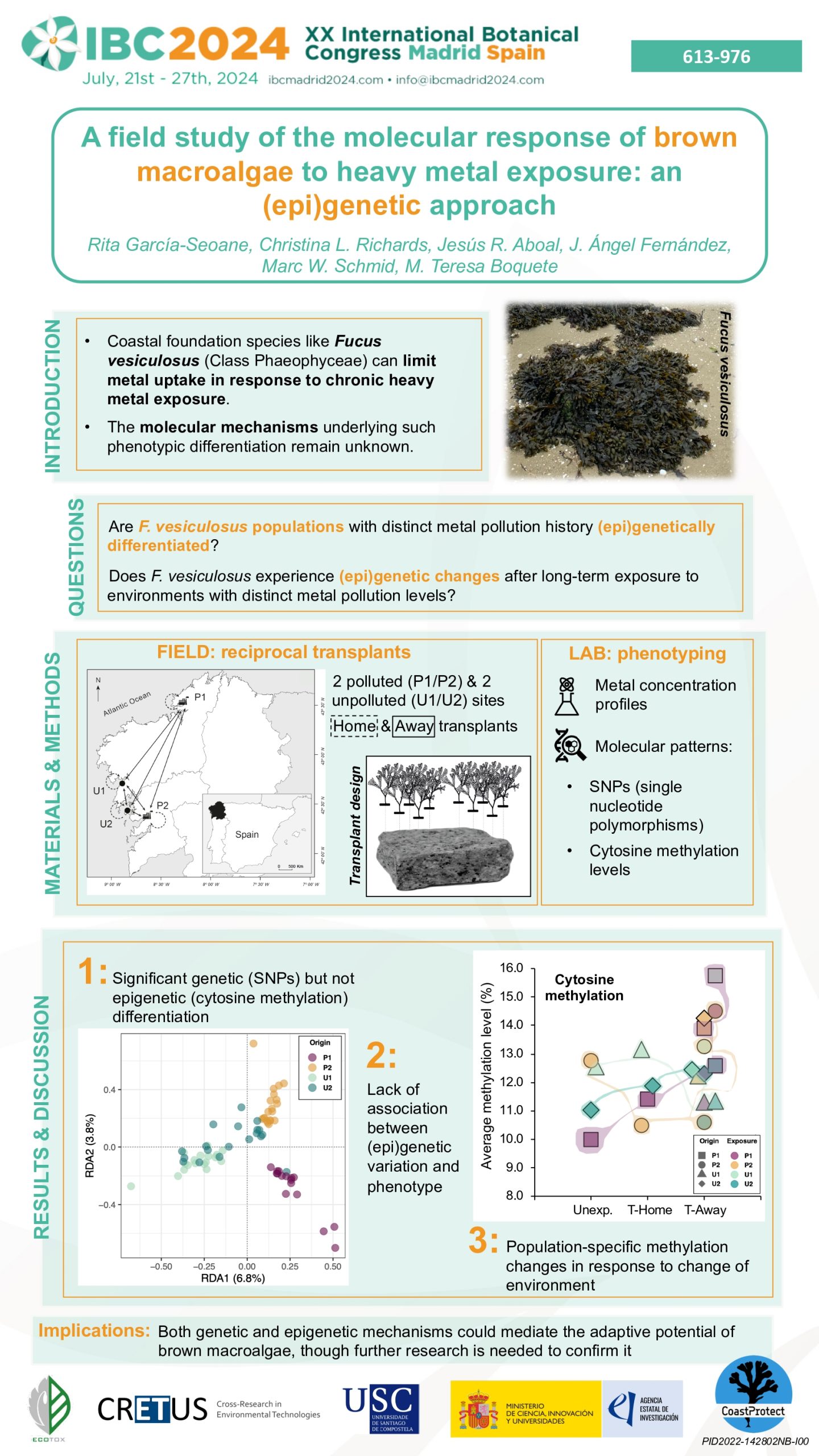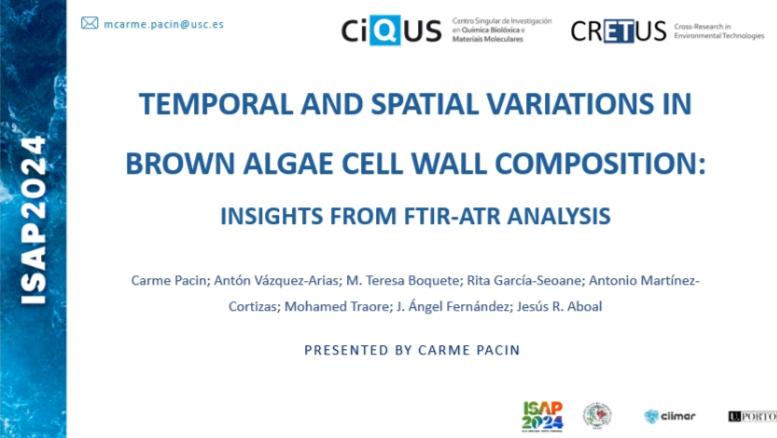Heavy metal (HM) pollution threatens biodiversity due to its high toxicity and persistence in natural ecosystems. Brown macroalgae, particularly Fucus vesiculosus, can accumulate and tolerate substantial concentrations of HMs. However, the impacts of chronic exposure on their fitness remains poorly understood, despite their importance as primary producers and habitat formers in coastal ecosystems. This study evaluates whether prolonged HM exposure adversely affects the sexual reproductive capacity of F. vesiculosus. For this, we collected 20 reproductively mature individuals of this species from each of four populations from northwest Spain: one reference – unpolluted – population (P1) and three populations with elevated levels of Pb (P2), Cr, Ni, Cu and Zn (P3), and As, Ag and Cd (P4). For each individual, we determined maximum thallus length, vegetative and reproductive biomass, number of receptacles (reproductive structures), and reproductive effort (proportion of total biomass allocated to reproduction). Thalli from the reference population were larger and heavier in both vegetative and reproductive biomass, and had significantly more receptacles than the other three. The reproductive effort, however, was similar to that of two polluted populations (P2, P3). Notably, P4 showed the lowest reproductive allocation. While the proportion of biomass allocated to reproduction was not negatively affected across all polluted populations, our preliminary results show an overall reduction in absolute reproductive biomass and number of reproductive structures. This decline may negatively impact the long-term persistence of these populations. To corroborate these trends, we will replicate this study across additional polluted and unpolluted populations.
Other project progress.
Authors:
Pacín, C., Boquete, M.T., Aboal, J.R., Fernández, J.A., Cronholm, B., Wernberg, T., Starko, S.
Congress:
Book of Abstracts – Posters - of the XX International Botanical Congress (IBC 2024), 21-27 July 2024, Madrid, España. P.0168, p. 604.
Authors:
García Seoane, R., Richards, C.L., Aboal, J.R., Fernández, J.A., Schmid, M.W., Boquete, M.T.
Congress:
Book of Abstracts – Posters - of the XX International Botanical Congress (IBC 2024), 21-27 July 2024, Madrid, España. P.0168, p. 101.
Authors:
Pacín, C., Vázquez-Arias, A., Boquete, M.T., García-Seoane, R., martínez-Cortizas, A., Traore, M., Fernández, J.A., Aboal, J.R.
Congress:
Book of Abstracts of the 8th Congress of the International Society for Applied Phycology (ISAP 2024), 16-21 June 2024, Porto, Portugal. Oral communications, p. 65.



